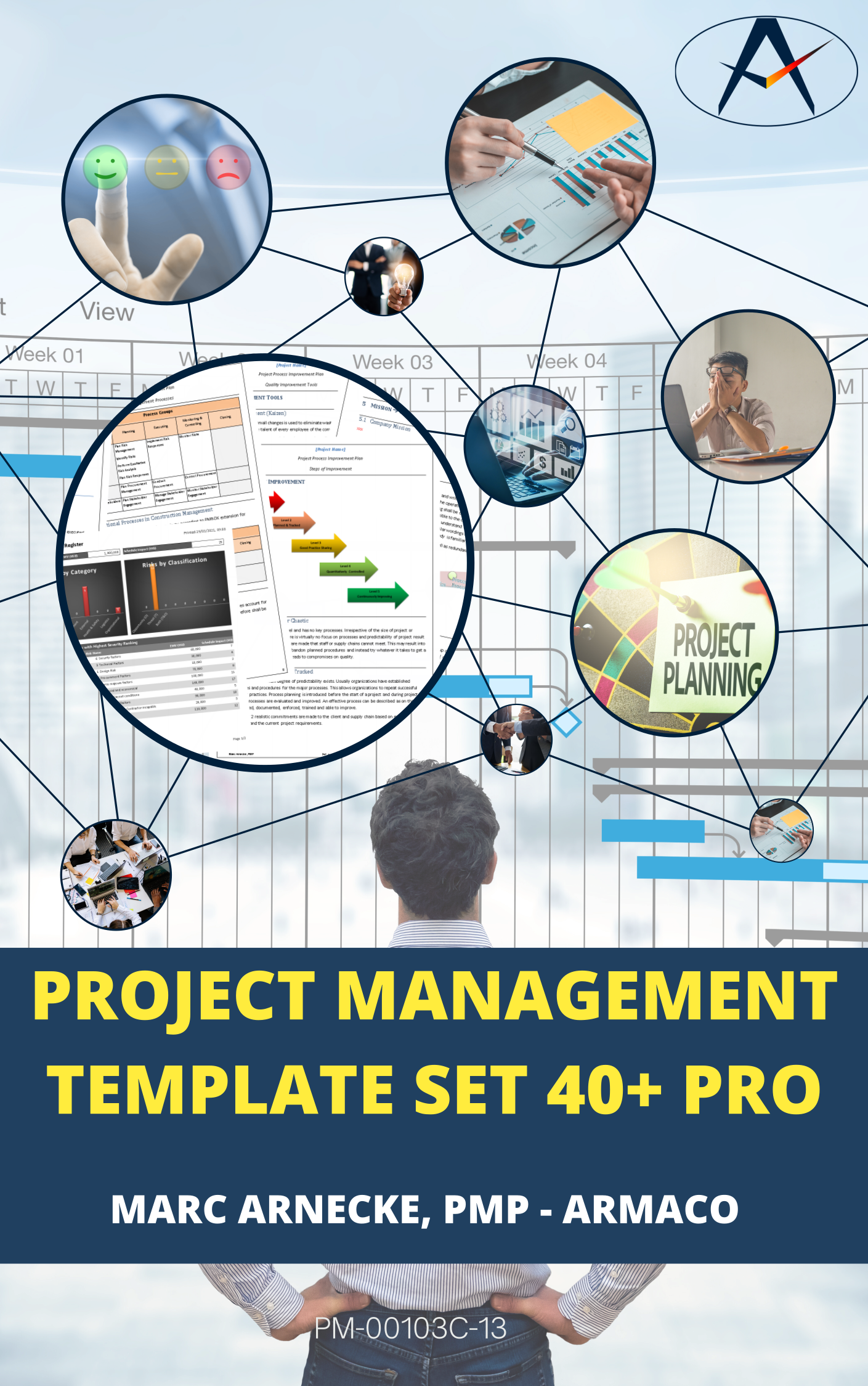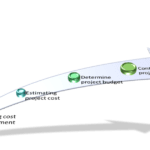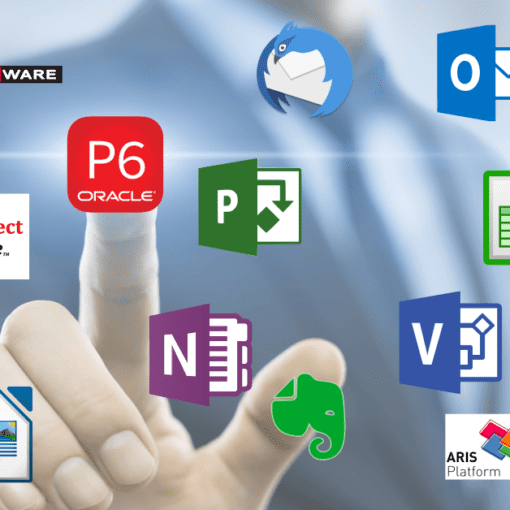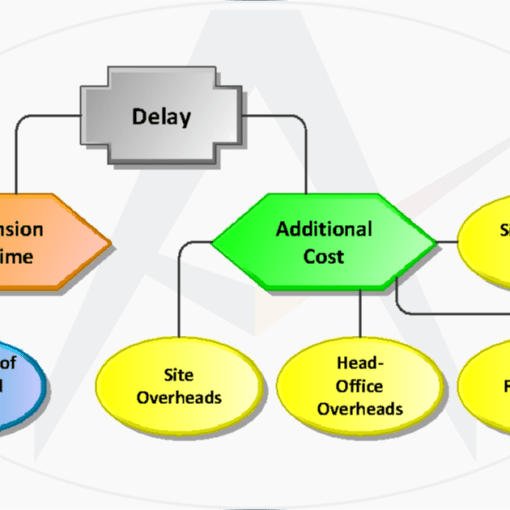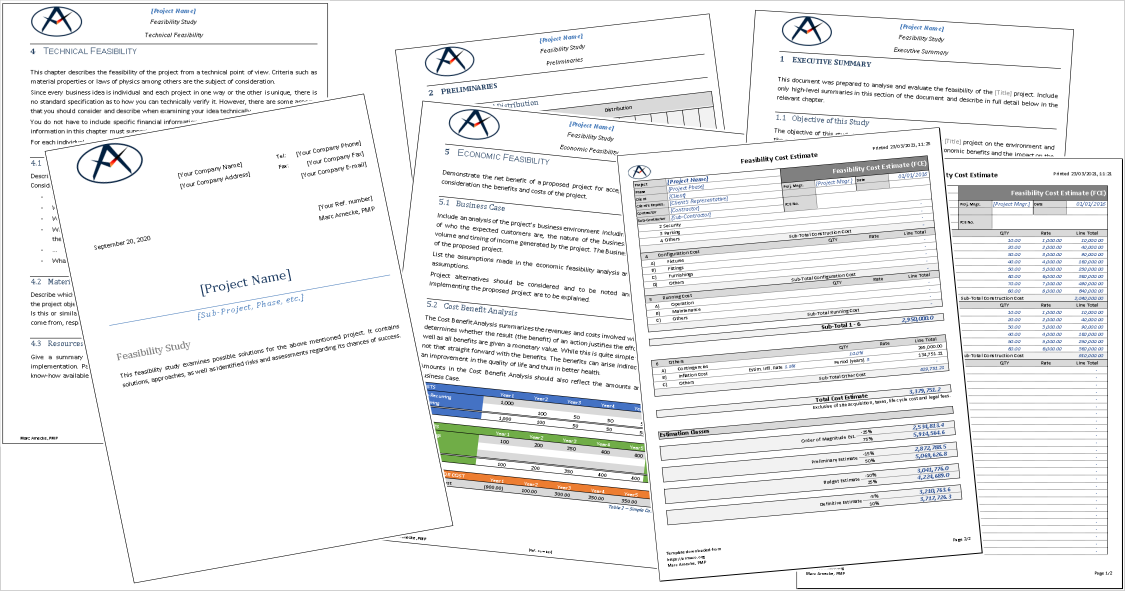Planning a Project in Simple Steps
If you got the right tools, project planning can be fun and is not difficult. However, without such tools or if you are new to the subject, it can easily become a very time consuming and work intensive task.
Limited special offer
- 43 different templates,
- 100% editable in MS Word and MS Excel,
- great time and effort saving,
- PMBOK® aligned,
- for students and experienced project managers.
Regular price: 79.99USD Currently only 29.99USD!
→ Start Your Next Project with Confidence NOW! ←
Risk free - 60 days return policy
Read in this article about project planning:
Project Planning Templates
What are good project management plan templates and how do they help?
Project Management Template Set for Students and Experienced PMBOK® aligned.
Are you a student studying project management? Do you want to learn how to manage projects in a way that will help you succeed in your career? Do you need a comprehensive template set that can be used by students as well as experienced project managers? If so, then this project management template set is perfect for you!
This project management template set includes all of the tools needed to manage any type of project. The templates are designed to be used with the knowledge and skills gained from the PMBOK® Guide, which is a guide used by many people who study or work in project management. The templates cover areas such as initiation and planning, executing, monitoring and controlling, closing, plus general information about managing projects.
The templates are easy to use and understand, so they're perfect for both students who are just beginning their studies or people who have been working in this field for years. They can be downloaded instantly after purchase so that they're available whenever they're needed!
How do current users think about this Template Set?
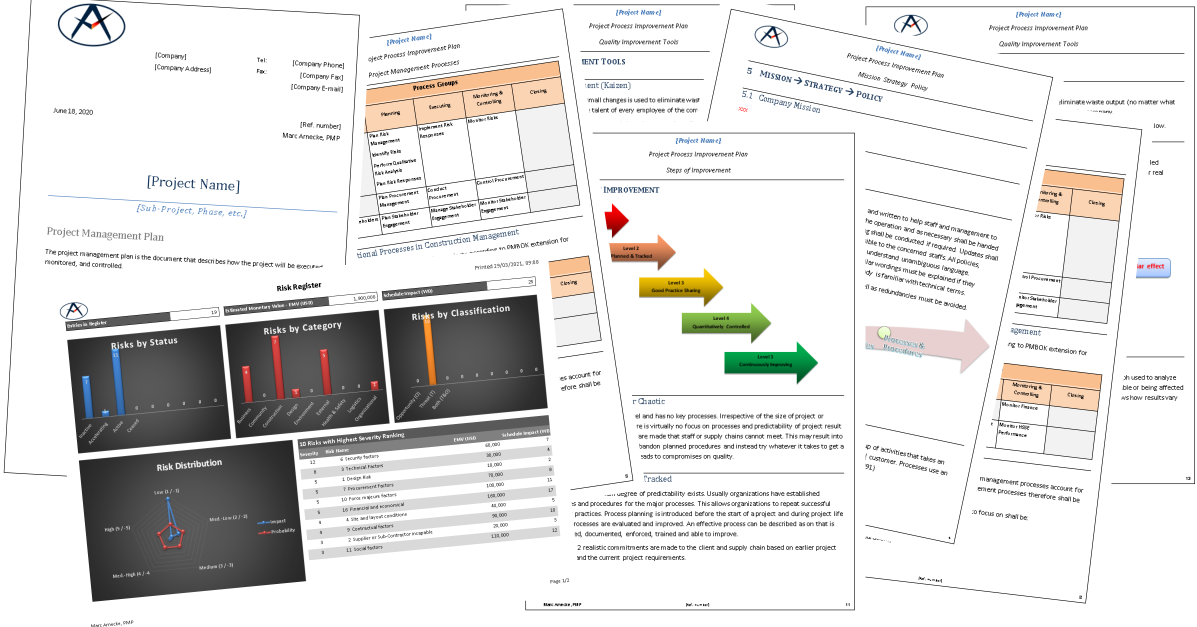
Do you have questions about this Project Management Template Set? Contact me...
Would you like some FREE samples?
Tell me where to send them!
Project Planning & Management Software
What is the best Project Management Software?
Project management tools are an important part of any project. They help you to plan and organize your projects, manage time, resources and costs. The project management tools listed below are great tools to manage your projects professionally and efficiently:
1. EGroupware German Online Collaboration Software

EGroupware is an open source collaboration software for companies that want to improve their internal communication and increase efficiency through teamwork. It combines email, calendar and contacts with web-based document repositories, task lists and workgroups as well as numerous other features into one central place.
2. Oracle Primavera P6
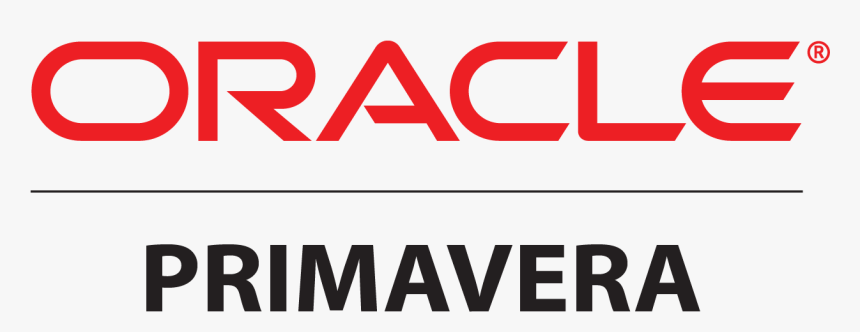
Primavera P6 is an Enterprise Project Management (EPM) solution that helps construction companies plan, schedule and manage their work more effectively by providing a single interface to all project data and information across the organization to make better informed decisions faster.
Project Planning Process Outputs
What is the most important output of the project planning process?
Dwight D. Eisenhower "Plans are worthless, but planning is everything."
The Project Plan is a document that contains the details of what needs to be done for the project. It should contain all of the major milestones, tasks, and deliverables required to complete the project. The Project Plan should also include information on when each task needs to be completed by and who will be responsible for completing each task.
The Risk Register is a document that contains an assessment of all known risks associated with the project. The Risk Register should include information on how these risks are managed and mitigated by the project team.
Requirements are statements about what something should do or look like in order to meet its purpose or goal. Requirements are often documented as user stories in agile software development environments.
Expectations are statements about what someone expects something to do or look like in order to meet its purpose or goal. Expectations are often documented as user stories in agile software development environments.
A Baseline is an agreed upon set of conditions under which work will be performed within an organization or group of organizations working together toward a common goal or mission statement; it may also refer to a document describing those conditions (e.g., budget).

5 Project Management Phases

1. Project Initiation
Project initiation is the first phase of project management, and it sets the tone for the rest of the project. The purpose of this phase is to set up a successful project by determining if it's feasible and starting all necessary preparations. This includes creating a detailed project charter, building a project team, and establishing communication with stakeholders.
2. Project Planning
Project planning is the second phase in project management. In this phase, you will develop baselines, detail planning, activities, and strategies.
Project planning is a process to ensure that all necessary tasks are completed to deliver an acceptable product or service. Project planning also helps you to identify the resources needed to complete each task so that you can manage them effectively throughout the project life cycle.
Even if the planning phase has many outputs, the detailed project schedule, the 3 baselines (scope, time, cost), the change process, and the risk register are probably the most used documents that you will visit again and again.
The planning phase is not a one-off event and you will especially need to adjust the schedule more often and reschedule every time a machine breaks down, material is late for some reason, or anything else comes up. Here you can play to your strengths and prove that you have it under control and that you have a solution for all adversities. Resource unavailability is certainly an entry on your risk register and a strategy is in place.


3. Project Execution
The project execution phase is the heart of all project phases and is usually the longest phase. During this phase, all of the tasks, and activities are implemented, material is purchased, and agreed deliverables are produced.
You as a project manager have to manage your resources, record data daily, and report progress and status to your stakeholders as agreed.
4. Project Monitoring and Controlling
Monitoring and controlling is the fourth phase in every project. During this phase you are assessing the performance of project work. During this phase goes parallel with the execution phase and you have to return to the planning phase quite often for re-planning and other corrective action.
You are monitoring the performance mainly against the baselines (scope, time, and cost). Monitoring product and process quality is also an important part and you need to keep an eye on your risk register.
Project monitoring and controlling provides information that can be used to manage a project effectively and improve performance and processes over time by:
- Identifying variances between planned and actual results that may require a change in the project's baselines,
- Comparing actual results with planned results to identify areas where adjustments are needed in order to achieve specific goals,
- Checking for trends in costs or schedule so that corrective actions can be taken if necessary.
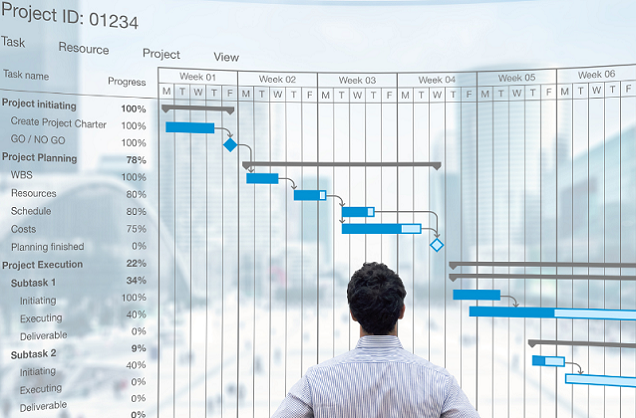

5. Project Closure
Project closure is the final phase of a project when the work is complete and the project has been formally accepted. The project manager and other key stakeholders sign off on the final product or service, and the closure phase ends with a formal close-out review.
The project closeout process includes:
- Verify that all deliverables have been produced and accepted by the customer.
- If a contract exists, ensure that it has been fulfilled in accordance with all terms and conditions.
- Complete post-project documentation such as final reports, lessons learned documents and any other documentation required by management.
Achieving Project Goals
Unambiguous Project Goals are the Fundamental Prerequisite for Your Project Success
Defining project goals is one of the most important tasks in project management. Without project goals, the probability of project failure increases significantly due to the lack of clear direction and a common understanding about it. Project goals are defined in 5 steps: Goals are collected, clearly formulated, separated from non-goals, prioritized and the relationships between the goals are analyzed.
Many projects can be described using the three most important target values of the magic triangle:
- Scope: What do we want to achieve? Which results should be worked out?
- Time: By what date should the project be completed?
- Costs: How much can the project cost?
Clearly formulated goals contribute to the success of the project. Goals fulfill the following functions:
- Control function: You need clear and clearly formulated goals in order to be able to measure and control at the end of the project whether the previously defined criteria have been met.
- Orientation function: Everyone involved can align their daily work with these goals, regardless of whether they are project managers or project employees.
- Connection function: By agreeing on clear goals, a uniform understanding is created - and misunderstandings and ambiguities are cleared up.
- Coordination function: Goals can be used to define responsibilities. Certain stakeholders can take responsibility for individual goals.
- Selection function: If it is difficult to decide between options, you can always use the project goals as a guide.
How to Define SMART Project Goals
Project goals are defined in the following steps:
- Determine goals: In the first step goals are collected. For now, they don't have to be perfectly formulated.
- Clearly formulate goals: Vague statements and unclear formulations are poison for good project goals. In this step, the ideas from step 1 are refined.
- Name non-goals: To define the scope of the project, it makes sense to name goals that are not supposed to be achieved.
- Prioritize goals: Are all goals equally important? Not quite! A distinction is often made between must, target and optional goals.
- Analyze relationships: It would be nice if all goals were optimally coordinated with the overall goal. In order to avoid risks, the relationships between the goals are analyzed and measures are derived depending on the situation.
Goals are best described with the SMART formula
SMART and goals: These two terms are often mentioned together. No wonder: With the help of the SMART formula you have a simple tool at hand to formulate goals clearly.
SMART is an acronym and stands for five criteria that good goal formulations should contain. There are different interpretations of the individual letters. According to the most common interpretation, SMART stands for:
- Specific
- Measurable
- Assignable
- Realistic
- Time-related
Formulate non-goals
Non-goals are those goals that are NOT desired to be achieved in the project and thus form the counterpart to the actual project goals. Why does it make sense to formulate these non-goals? Very simple: You prevent misunderstandings, simplify the argumentation in later discussions and clearly define what belongs in your project - and what doesn't.
Prioritizing Goals
After the first three steps, you have a list of clearly formulated project goals. But what happens if there are goals that contradict or cannot be achieved? What happens if not all goals can be reached and you have to choose?
This is exactly when you will be happy if you have prioritized the goals together with the most important stakeholders at the beginning. A typical prioritization looks like this:
- Must-goals: The most important goals in the project. If they are not reached, the project is deemed to have failed.
- Should goals: If these goals are not achieved, the project does not automatically fail, but satisfaction with the project result is impaired.
- Optional goals: "Nice to have" or an additional bonus. If the achievement is not very complex and causes only low costs, then they are pursued.
Analyze Goal Relationships
Shouldn't all goals in the project serve to lead the project to success? You might think so, but the reality is often different.
Have you been in this situation, our project shouldn't cost much, but the result has to be the finest? Do these goals harmonize with each other? Clearly not. In this case, the goals are in competition with each other.
But there is not only the goal competition, but a total of the following 5 different goal relationships:
- Identity: Identical goals, which often differ only in the wording.
- Complementarity: The goals support each other. A project manager likes to have many such goals in his project.
- Neutrality: The goals are not related to each other and do not influence each other.
- Competition: The goals compete with each other. Achieving one goal hinders the achievement of the other goal.
- Antinomy: The goals are mutually exclusive.

